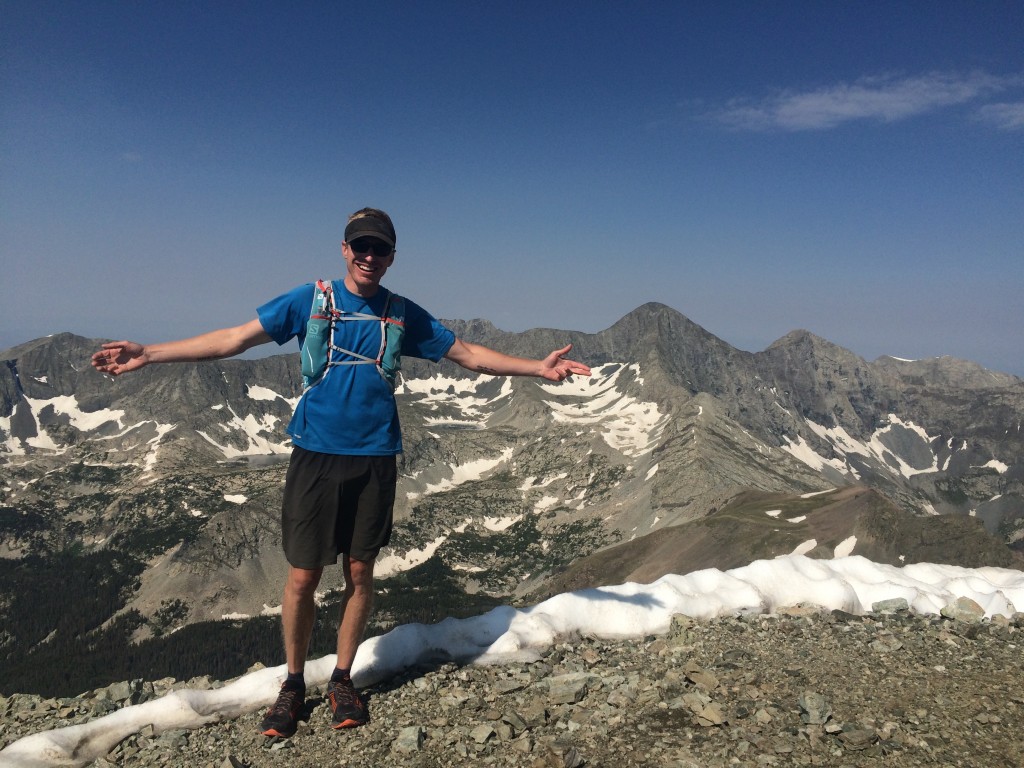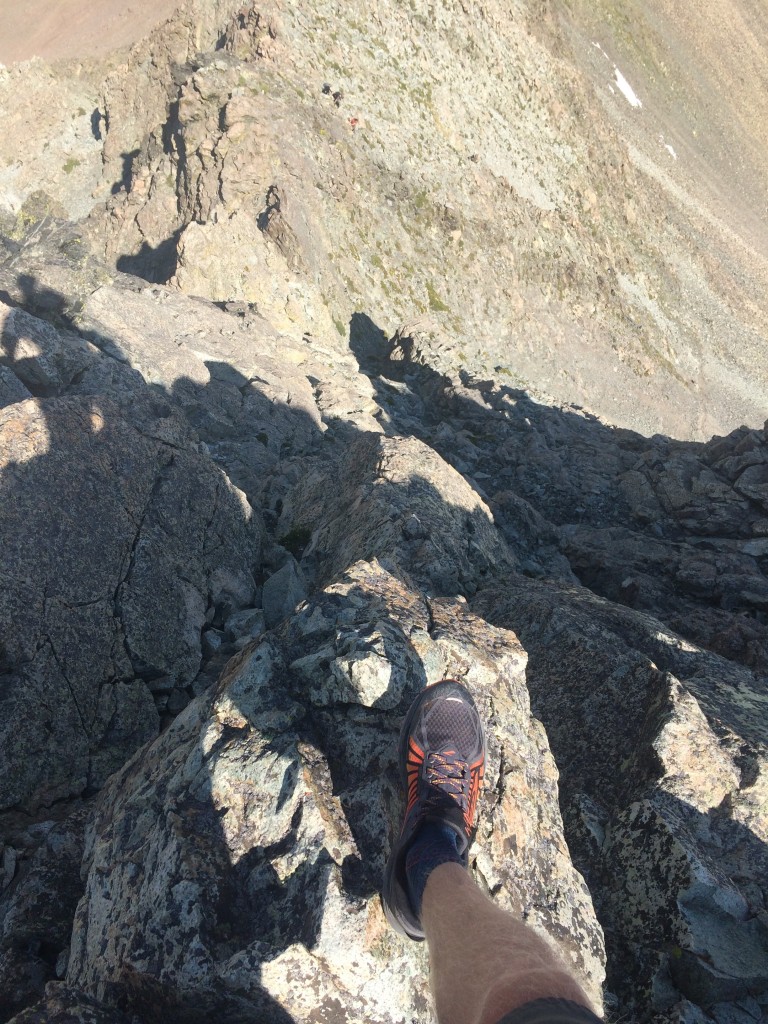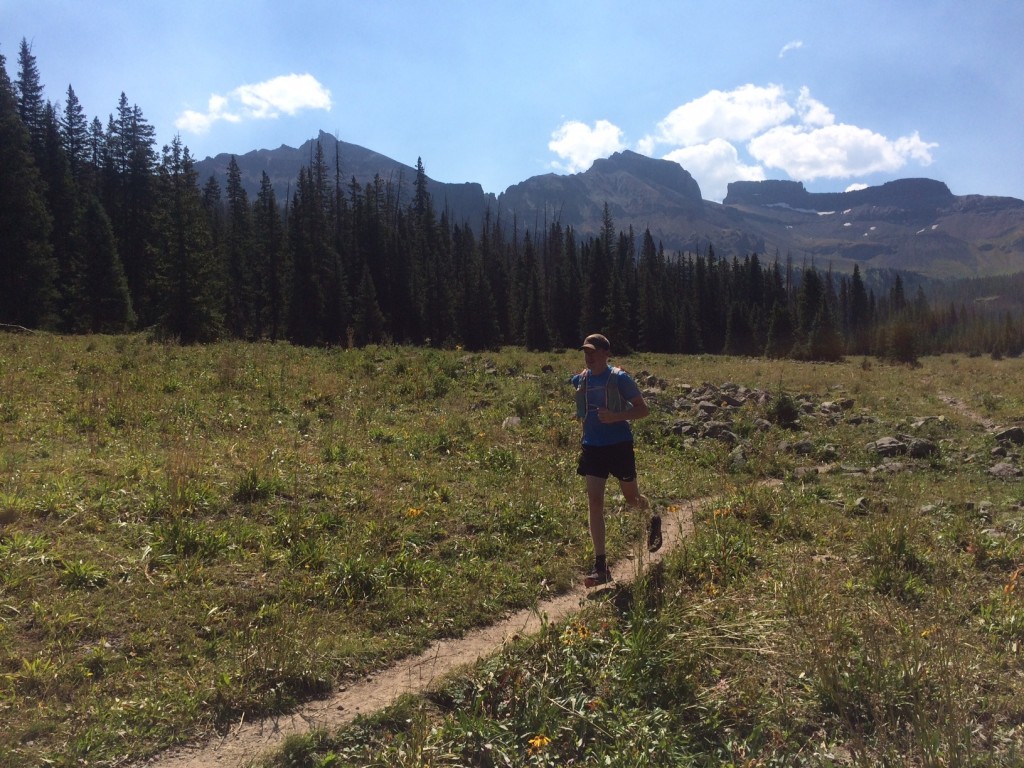Brooks Caldera 2 Review
Our Verdict
Our Analysis and Test Results
Hands-On Review of the Brooks Caldera
Sporting midsole stack heights of 28mm in the heel and 24mm in the forefoot, the Brooks Caldera seems to be a direct competitor to the maximal cushioning trend exemplified in this review by the Hoka Challenger ATR 4. While it doesn't appear to have as thick a midsole as that shoe, the stats would say otherwise; it also features a similarly low 4mm heel-toe drop. The comparisons don't end there, as the Caldera is impressively light for such a beefy shoe, and taking another page out of Hoka's playbook, quite expensive. The remarkable amount of foot protection, low weight, and overall comfort are certainly things to love about this shoe, but we found that these positive attributes were offset by its meager comparative score when it came to stability, sensitivity, and traction. While we thought this shoe was far more comfortable and enjoyable to wear than recent iterations of the ever-popular Cascadia, it was tied with the Altra Lone Peak 3.5 as the lowest scorer in this year's review.
Foot Protection
Foot protection is the strong shining point of the Caldera, and we had it ranked right up there as the best in this entire review. For reference, the very firm New Balance Leadville v3 and the ultra cushioned Hoka Challenger ATR 4 were the other shoes that also offered a similar amount of foot protection. Compared to those shoes, it felt like a middle ground between the two. While it naturally features a very hefty amount of foam cushioning underfoot, it is firmer and not quite as springy feeling as the Challenger ATR 4. And while it may have some integrated rock plate or stability posts sandwiched in the midsole (the information on Brooks' website regarding the midsole construction is frustratingly vague), there is no doubt that it offers more energy return than the Leadville v3.
In our underfoot protection testing, where we ran back and forth across sharp talus, we were able to feel minimal protrusions in the forefoot, and nothing in the heel. This excellent underfoot protection is paired with a firm toe bumper and rubberized overlays on the interior sidewalls that each do an adequate job at protecting your foot. Those who value cushioning and foot protection above all else will be happy with this shoe. 9 out of 10 points.
Traction
From the good news directly to the bad — this shoe had the least effective traction in our testing. Its outsole is comprised of many closely spaced and very shallow multi-directional lugs positioned throughout the sole in separately glued on patches. We prefer single piece outsoles as they have much less tendency to rip off as the shoe wears over time. Regardless, this shoe performed lower than average when it came to traction on steep dirt and grass, and very poorly on rock and wet rock, compared to the competition. It scored lower than the Lone Peak 3.5, which still managed to grip dirt and grass well despite its poor grip on rock, and also gripped less effectively than the somewhat similarly patterned Challenger ATR 4. While we feel like the outsole of this shoe is plenty adequate for standard dirt trail running, we wouldn't recommend it for off road adventures.
Stability
When it came to stability, this shoe was not the worst, but it also wasn't good. We noticed that the lacing system did not do a very awesome job at locking in the midfoot, and there was a significant amount of slop in this pretty wide fitting shoe. Combine the sloppy fit with one of the largest stack heights in this review (28mm under the heel), and we found that this shoe certainly had a propensity to roll laterally. The instability has been particularly noticeable to us on a steep off-trail mountain descent we made on Fortress Peak in the San Juan Mountains but was also backed up by our comparative side-hill testing. That said, we still found it to be slightly more stable than the similar Hoka Challenger ATR 4.
Comfort
Initially, we were very impressed with the comfortable feeling of running in this shoe. It fits true to size and has a wider than average forefoot. This wideness persists on back through the midfoot, where we experienced extra space and a bit of a sloppy fit due to a lacing system that didn't grip and tighten around the foot in a manner similar to the Nike Air Zoom Wildhorse. The elastic inner liner found on the New Balance Vazee Summit v2 is also notable.
In our water bucket test, we noticed that this shoe was more absorptive than all but three other shoes, but it made up for that slightly by shedding the water weight fairly effectively. If we have one complaint, it is that we experienced points of rubbing on the inside of both of our feet, near the ball of the foot, corresponding to the where the rubber protective overlay is on the outside of the upper. This created hot spots for us that prevented us from going truly long while wearing these shoes but may not be an issue for most users. In the end, we gave it 7 out of 10 for comfort.
Weight
Our pair of men's size 11 shoes weighed in at 21.6 ounces, which was the same weight as the similarly cushioned Challenger ATR. It is impressive that such a burly and bulky shoe could weigh so little, and it received a better than average score of 6 out of 10. At 21.3 ounces per pair, the best overall trail running shoes, the Nike Air Zoom Terra Kiger 4, weighed almost the same amount, despite being far more low profile.
Sensitivity
Much like its highly protective counterparts, this shoe suffered greatly in the sensitivity department. The huge amount of thick foam in the midsole certainly divorces your foot from the feeling of the trail. As such, we could only give it 3 out of 10 points, the same score as the Challenger ATR, but a smidge higher than the Leadville v3. We figure that runners attracted to this shoe will be psyched about the cushioning and willing to deal with the inherent lack of sensitivity, but if you are a runner who values an intimate connection with the running surface, we recommend you look for a different shoe.
Best Applications
The Brooks Caldera is a maximally cushioned shoe that does a good job of absorbing the impact of trail running, but also suffers from instability. Considering this, it will be best used strictly as a trail runner and is probably a good choice for ultra races that don't feature too gnarly of terrain. Because of its relatively poor traction and instability, we don't recommend it for much off trail usage.
Value
This shoe retails for $140. Why? It is the most expensive shoe in our review, and as the lowest scorer, we, of course, do not think that this presents a great value.
Conclusion
The Brooks Caldera is an interesting new shoe that seems designed to directly compete with the maximally cushioned standard set by Hoka. While it does not appear to have such a fat midsole (maybe a good thing?), it has a very similar 28mm stack height under the heel combined with a minimal 4mm heel-toe drop. It also suffers from similar issues such as poor stability and sensitivity for the trail. While we think it is a solid and comfortable shoe, it scored near the bottom of this review.












